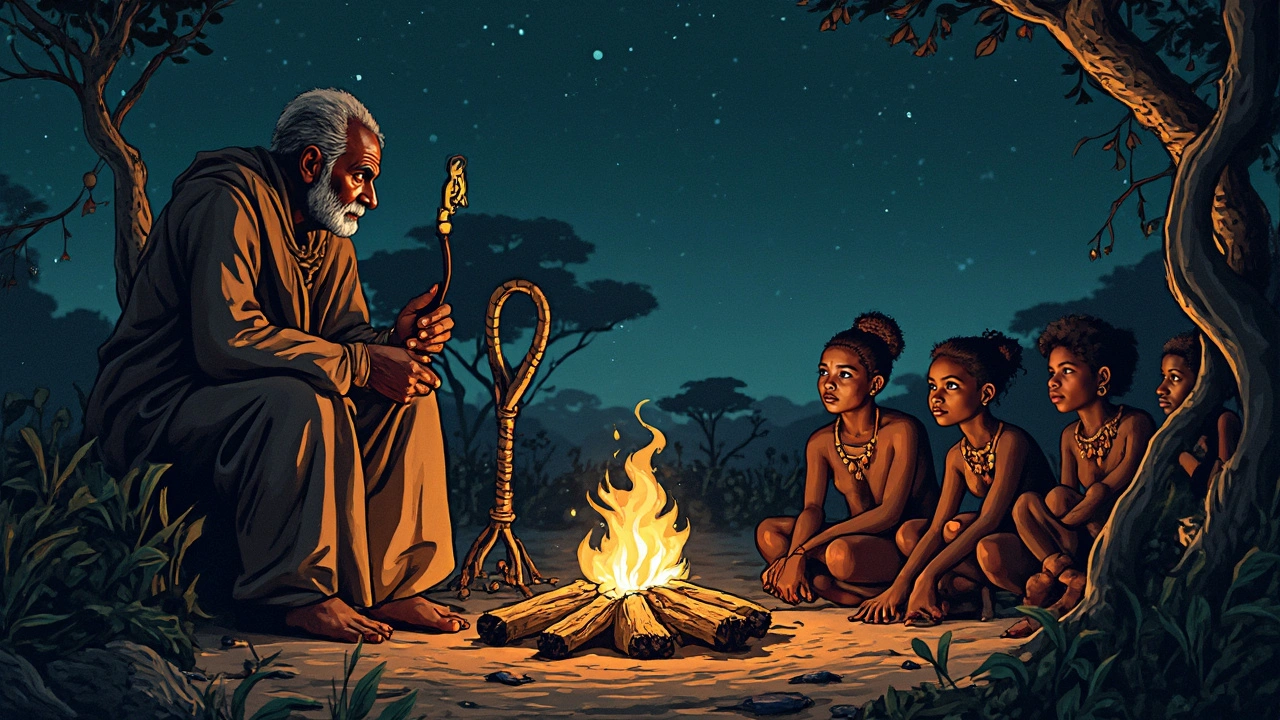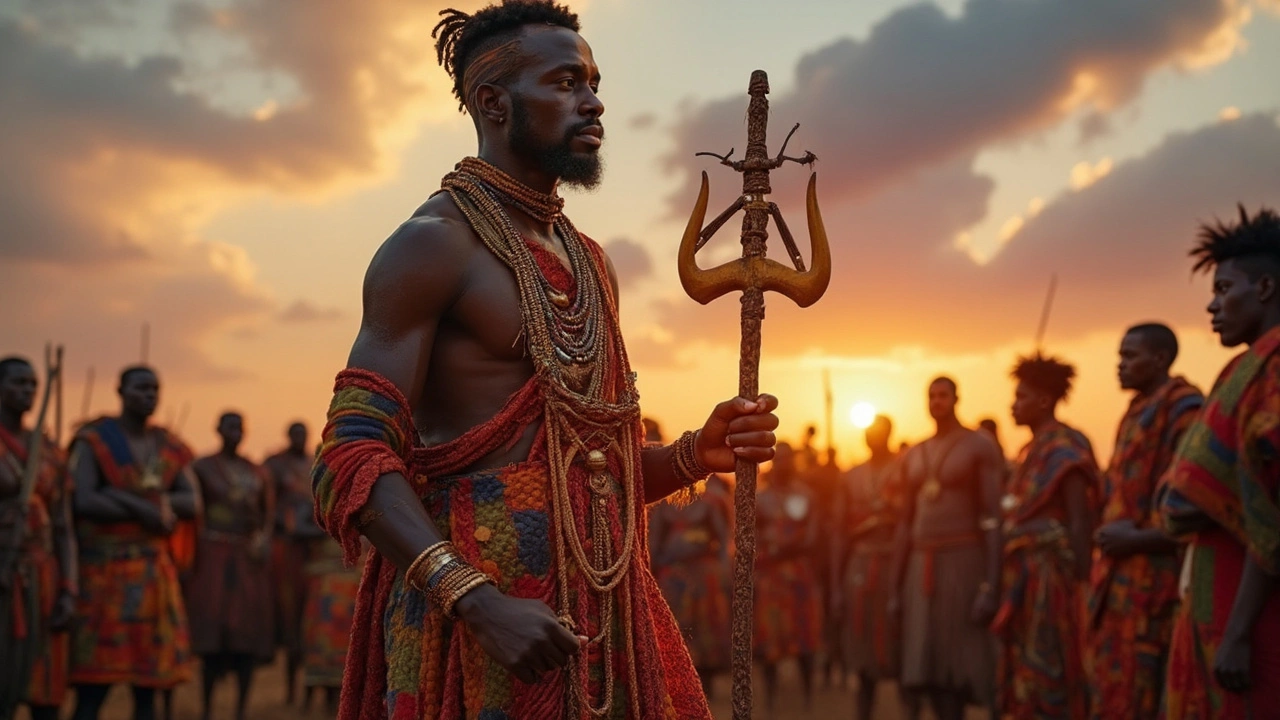The rungu, a wooden club, isn't just a tool or a weapon; it's a badge of honor among many African tribes. Have you ever wondered why something so simple carries such weight? In various cultures across Africa, the rungu is a lot more than just carved wood. It's a sign of authority, a status symbol, and sometimes, even a diplomatic tool.
Made primarily from dense hardwood, the rungu's strength isn't just physical. It's deeply rooted in traditions, passed down through generations. Its craftsmanship is a skill honed over time, reflecting the tribe's culture and beliefs.
Nowadays, while technology and modern weapons have become prevalent, the rungu still holds a significant place. But why does it endure? Because it's a reminder of history, respect, and the power dynamics within a community. It's not just about wielding authority; it's about honoring one's heritage.
- Origin and History
- Cultural Significance
- Traditional Uses
- Modern-Day Symbolism
- Rungu in Ceremonies
- Care and Craftsmanship
Origin and History
The rungu, often seen as a simple wooden baton, has its roots deep in the dusty plains of East Africa. It first popped up in the hands of the Maasai people, one of the most renowned African tribes. These pastoral communities used the rungu not just as a weapon but as a mark of authority and status.
If you dive into the past, the rungu wasn't just a tool for self-defense or hunting. It was a part of a young warrior's rite of passage. Imagine a Maasai warrior, dressed in traditional shuka, holding the rungu as a statement piece. It marked a step into adulthood, a mantle of responsibility.
But the story doesn't end there. As we look at the role the rungu has played across various tribes, it becomes clear why it’s more than just wood. The materials used—whether it's acacia, butternut, or sometimes even mahogany—showcase the local environment and culture.
Here's a fun fact: during the colonial era, the rungu was sometimes gifted to British officials as a symbol of friendship and diplomacy. It was a gesture that said, "We recognize your authority, just as you recognize ours."
Fast forward to today, and the rungu still holds ceremonial significance. Whether it's during weddings, tribal councils, or even political rallies, spotting a rungu is like catching a glimpse of history in motion. It's fascinating how something as modest as a wooden stick can carry the weight of tradition, leadership, and respect.
Cultural Significance
The rungu is much more than a physical object; it's a cultural touchstone that speaks volumes about the societies that cherish it. In East Africa, particularly among the Maasai and other tribes, a rungu isn't just handed over to anyone. It's a gift given to those who have earned respect, whether as a leader, a warrior, or an esteemed community member.
Gifting a rungu is a momentous occasion, marking milestones like the coming of age or significant achievements. It symbolizes not just personal strength but also trust and social status within the tribe. For the Maasai, receiving a rungu can even signal that someone has reached a new level of bravery or leadership, with the item being prominently displayed during ceremonies and cultural gatherings.
Symbol of Power and Peace
While the rungu is traditionally seen as a weapon, it's rarely used for violence. Instead, it embodies authority and peacekeeping. Elders and leaders might use it to enforce decisions or mediate disputes. This blend of strength and diplomacy showcases its dual nature in tribal life.
Rungu in Art and Storytelling
The rungu is also a rich source of inspiration for African art and folklore. Stories told around the campfire often feature heroes wielding rungu, embodying the virtues of courage, wisdom, and fairness. This helps reinforce the values tied to the rungu, keeping its significance alive for future generations.
As tribes continue to evolve, the rungu remains a constant, representing stability and continuity in a changing world. So next time you see one, remember it's not just a piece of wood—it's a powerful symbol, deeply embedded in the cultural fabric of African tribes.
Traditional Uses
Throughout history, the rungu has served several practical and symbolic purposes in various African tribes. It wasn't just packed for show; this multitasking tool was vital in daily life.
As a Weapon
First up, yeah, it's a weapon. Talk about dual functionality! The rungu was used for hunting small game and also served as a form of protection against wild animals. Its design—a short handle and a rounded head—allowed for precision and intent. Warriors held it proudly, ready to defend their villages.
Symbol of Leadership
Ever heard the phrase "mightier than the sword"? Well, among leaders, it’s "mightier than the rungu." Chiefs and elders often carried this iconic club to signify authority and power. It's like their version of a crown—only way cooler and more practical in a meeting.
In Ceremonies and Rites
Ceremonially, the rungu holds its ground. It's not uncommon for it to be part of rites and celebrations, acting as a sign of passage or commitment. Some tribes use it during important meetings or decision-making gatherings. It's like a magical talking stick, only real and deeply rooted in cultural significance.
In every role, the rungu isn’t just an object. It’s a powerful bridge connecting tradition with the present day. When someone carries a rungu, they're not just holding an artifact—they're holding history and authority in their hands.

Modern-Day Symbolism
Even today, the rungu holds a special place in the cultural psyche of several African tribes. While you might think this piece of wood would just end up gathering dust in a museum, it's quite the opposite. The rungu is still actively used in many regions, proudly representing the notions of leadership and respect.
In Kenya, for example, leaders in communities often carry a rungu during important meetings or tribal councils. It’s like a visible reminder of the leader’s authority and a nod to the traditions that have guided the community for centuries. But it's not just the political or tribal leaders who understand its value. Many families pass down their rungus, considering them heirlooms, rich with history and family pride.
Interestingly, in modern ceremonies, such as weddings, a groom might be seen with a rungu, symbolizing his new role as the leader of his household. Talk about starting married life with a statement, right? It's not just about the past; it's also about incorporating these symbols into today's world.
Moreover, artists and craftsmen have started to recreate the rungu for a broader audience, adding unique designs and personal touches that cater to the taste of modern buyers. This blend of traditional and contemporary design is drawing attention from art collectors and tourists alike.
As the world becomes more interconnected, it’s fascinating to see how the rungu maintains its place not just as a cultural artifact but as a living symbol of respect and leadership. Engaging with this piece of heritage is a reminder of the importance of understanding where we come from, and the roles that symbols play in our lives today.
Rungu in Ceremonies
When it comes to ceremonies in African tribes, the rungu often takes center stage, playing a symbolic role that's rich in meaning. These ceremonies range from weddings to leadership transitions, each one highlighting the rungu's significance as a cultural symbol.
Roles in Ceremonial Settings
During wedding ceremonies, the rungu might be presented to the groom, symbolizing strength and protection. It's not just a gift; it's a wish for a strong and prosperous marriage. In a way, it stands as an emblem of the responsibilities that come with marriage, encouraging the groom to protect and honor his family.
In tribal leadership ceremonies, the rungu is often handed over to the new leader as a sign of the passing of power. This isn't done lightly—the rungu signifies trust placed in the leader to guide and protect the community. It's a visible token of authority, reminding everyone of the leader's role.
Rungu Dance Rituals
Ritualistic dances during these events are common, where participants wield the rungu high. This act isn't merely performative; it signifies readiness to embrace life's challenges and to vanquish any impending threats.
Modern Adaptations
These days, while certain ceremonies have adapted to modern influences, the presence of the rungu remains steadfast. Even when not in use, it can be seen in ceremonial spaces, acknowledging its importance in community heritage and identity.
Through ceremonies, the rungu continues to serve as a powerful reminder of cultural traditions and the authority it represents within many African tribes.
Care and Craftsmanship
When it comes to the making of a rungu, it's not just about carving a piece of wood. There's a whole process steeped in tradition and skill. Typically, tribes use local hardwoods like acacia for crafting these clubs, mainly because they're tough and durable. The choice of wood is crucial because it needs to withstand time and use.
Craftsmanship starts with selecting the right piece of wood. It's usually left to dry naturally to prevent cracking, ensuring the finished product is strong. Then, experienced artisans shape the rungu, often by hand, carving it into a distinctive, elongated form with a slightly bulbous head. It's about getting the balance right; it's not just about looks but also practicality.
Attention to Details
The artisans pay close attention to details. Engravings can tell unique stories or indicate tribal affiliations. Some might even inlay different materials to add character and significance. These engravings aren't just decorative; they can symbolize authority or achievements.
Caring for Your Rungu
Once a rungu is made, it’s important to care for it properly to maintain its strength and appearance. Here are some straightforward tips:
- Regular Oil Treatments: Applying natural oils like linseed can preserve the wood and keep it from drying out.
- Avoid Excessive Moisture: Keep it dry. If it gets wet, let it air dry to avoid warping.
- Avoid Extreme Heat: Too much heat can cause the wood to crack. Store in a cool, dry place.
- Handle with Care: Though sturdy, unnecessary rough handling could damage the intricate designs.
With the right care, a rungu isn’t just a piece of history; it can be a heirloom passed down, bearing not just marks of craftsmanship but also stories of those who wielded it.


 Health and Wellness
Health and Wellness